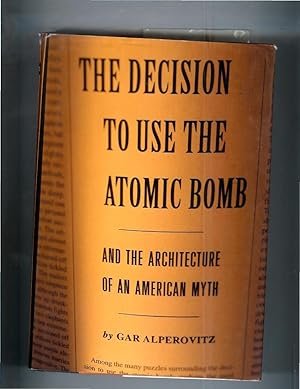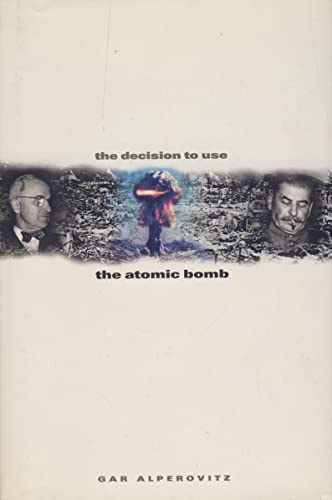alperovitz gar assistance sanho tree (2 Ergebnisse)
FeedbackSuchfilter
Produktart
- Alle Product Types
- Bücher (2)
- Magazine & Zeitschriften (Keine weiteren Ergebnisse entsprechen dieser Verfeinerung)
- Comics (Keine weiteren Ergebnisse entsprechen dieser Verfeinerung)
- Noten (Keine weiteren Ergebnisse entsprechen dieser Verfeinerung)
- Kunst, Grafik & Poster (Keine weiteren Ergebnisse entsprechen dieser Verfeinerung)
- Fotografien (Keine weiteren Ergebnisse entsprechen dieser Verfeinerung)
- Karten (Keine weiteren Ergebnisse entsprechen dieser Verfeinerung)
- Manuskripte & Papierantiquitäten (Keine weiteren Ergebnisse entsprechen dieser Verfeinerung)
Zustand
- Alle
- Neu (Keine weiteren Ergebnisse entsprechen dieser Verfeinerung)
- Antiquarisch (2)
Einband
- alle Einbände
- Hardcover (2)
- Softcover (Keine weiteren Ergebnisse entsprechen dieser Verfeinerung)
Weitere Eigenschaften
- Erstausgabe (2)
- Signiert (Keine weiteren Ergebnisse entsprechen dieser Verfeinerung)
- Schutzumschlag (2)
- Angebotsfoto (1)
- Keine Print-on-Demand Angebote (2)
Gratisversand
- Kostenloser Versand nach Deutschland (Keine weiteren Ergebnisse entsprechen dieser Verfeinerung)
Verkäuferbewertung
-
THE DECISION TO USE THE ATOMIC BOMB And The Architecture Of An American Myth.
Verlag: NY. 1995. Knopf, 1995
ISBN 10: 0679443312 ISBN 13: 9780679443315
Anbieter: Chris Fessler, Bookseller, Howell, MI, USA
Erstausgabe
large thick orange & black ½ cloth hardbound 8vo. dustwrapper in protective plastic. v fine cond. binding square & tight. couple of faint smudges on covers . edges clean. contents free of all markings. dustwrapper in fine cond. minor rubbing & wrinkling, not torn or price clipped. nice copy. no library markings, store stamps, stickers, bookplates, no names, inking , underlining, remainder markings etc ~first edition so stated. first printing (nap). xiv+847p+ about the author & colophon. appendix. notes.select bibliography. acknowledgments. index. deckled foredge (looks "hand cut")world history. american history. history of japan. world war ii. james f. byrnes. war in the pacific. harry s truman. FDR. atomic physics. nuclear weapons research. ~ One of the most controversial issues absorbing America today: Was it necessary to drop the atomic bombs on Hiroshima and Nagasaki? Fifty years after the fateful summer of 1945, we are still debating Harry Truman's decision. Now, in an exhaustive, thoroughly documented study of the events of that time, Gar Alperovitz makes plain why the United States did not need to deploy the bomb, how Truman was advised of alternatives to it by nearly every civilian and military adviser, and how his final decision was later justified by what amounted to a deception~the claim that the action saved half a million to a million American soldiers who might otherwise have died in an invasion. Alperovitz demonstrates that Japan was close to surrender, that it was profoundly threatened by the prospect of Soviet entry into the war, and that American leaders knew the end was near. Military commanders like Eisenhower, Arnold, and Leahy saw no need to use the bomb; most of Truman's key Cabinet members urged a clarification of the position of Japan's Emperor to speed surrender. But the inexperienced president listened most intently to his incoming secretary of state, James F. Byrnes, and Byrnes was convinced the bomb would be an important diplomatic instrument in dealing with the Soviets. The Decision to Use the Atomic Bomb is based on many years of archival research and includes important new documentary discoveries. It assesses who knew what and when, and who did what and why. It is the fullest account yet written of this momentous and sobering episode in twentieth~century history.
-
The Decision to Use the Atomic Bomb: and the Architecture of the American Myth
Verlag: HarperCollins Publishers, London, 1995
ISBN 10: 0002556146 ISBN 13: 9780002556149
Anbieter: Syber's Books, Melbourne, VIC, Australien
Erstausgabe
Hardcover. Zustand: Very Good. Zustand des Schutzumschlags: Good. First Edition. 1.5 kg.; (And), X-XIV, (3), 4-847, (3) pages, preface and introduction by author, appendix, notes, selected bibliography, acknowledgements and index. Dull blue coloured endpapers. Blue coloured boards with gilt titles to the backstrip. Bumping to the top book corners and mild rubbing to the book edges. Colour photographic dustwrapper with gray and black titles to the front panel and backstrip. Rubbing to the book panels and a little bumping to the book edges. "The Nuclear Age dawned in August 1945 when the US Air Force brought its terrible packages of destruction to the people of Hiroshima and Nagasaki. Those bombs put the Earth ever afterwards on the brink of self-annihilation. But it had to happen: the comic bomb was dropped to save one million lives and end the war. It was the only military and political option. Or was it? What if the dropping of those first bombs was not so unavoidable as we have always been led to believe? What of the Second World War could have been brought to an end without ushering in the Nuclear Age? This is the subject of this exceedingly powerful and important book." -- From the front fold over panel blurb. Size: 8vo - over 7¾" - 9¾" tall. Please refer to accompanying picture (s). Quantity Available: 1. Shipped Weight: Under 1 kilo. Category: Politics & Government; Military History -- World War II; History -- America; ISBN: 0002556146. ISBN/EAN: 9780002556149. Inventory No: 0111451.



